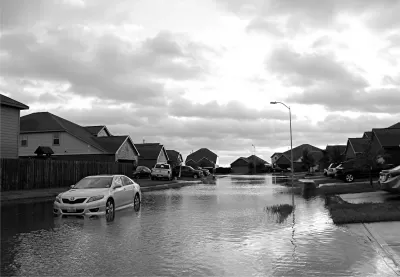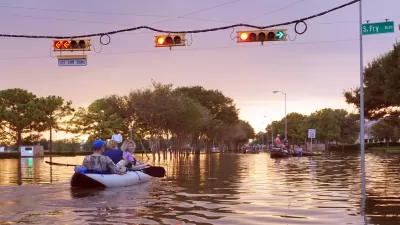Disaster recovery in the Houston area has been inconsistent, with low-income residents of color continuing to struggle to put their lives and communities back together.

Doris Brown and Ben Hirsch report on a research project looking at the experience of Hurricane Harvey survivors and the reasons low-income communities of color have recovered much more slowly than other parts of the Houston area. "Considering the perspectives of poor people and people of color who have lived through natural disasters means we have to discard the understanding that disasters happen at one moment in time and recovery begins immediately."
They point to insufficient government aid and recovery resources as one reason these communities are slow to recover. "Current home repair assistance eligibility standards — which exclude people for having houses in heirship, tax debt, not being able to afford flood insurance and deferred maintenance — are a clear example of how viewing disasters as events that take place at one moment amplifies inequality and the racial wealth gap."
Brown and Hirsch say the research findings also suggest that local evacuation centers in these communities and more investment in disaster preparedness would help with recovery. In addition, cash payments, a streamlined application process, and more funding for community-based groups would help decrease the racial disparities in disaster recovery.
FULL STORY: 5 ways to help take racism out of disaster recovery

Alabama: Trump Terminates Settlements for Black Communities Harmed By Raw Sewage
Trump deemed the landmark civil rights agreement “illegal DEI and environmental justice policy.”

Study: Maui’s Plan to Convert Vacation Rentals to Long-Term Housing Could Cause Nearly $1 Billion Economic Loss
The plan would reduce visitor accommodation by 25% resulting in 1,900 jobs lost.

Why Should We Subsidize Public Transportation?
Many public transit agencies face financial stress due to rising costs, declining fare revenue, and declining subsidies. Transit advocates must provide a strong business case for increasing public transit funding.

Wind Energy on the Rise Despite Federal Policy Reversal
The Trump administration is revoking federal support for renewable energy, but demand for new projects continues unabated.

Passengers Flock to Caltrain After Electrification
The new electric trains are running faster and more reliably, leading to strong ridership growth on the Bay Area rail system.

Texas Churches Rally Behind ‘Yes in God’s Back Yard’ Legislation
Religious leaders want the state to reduce zoning regulations to streamline leasing church-owned land to housing developers.
Urban Design for Planners 1: Software Tools
This six-course series explores essential urban design concepts using open source software and equips planners with the tools they need to participate fully in the urban design process.
Planning for Universal Design
Learn the tools for implementing Universal Design in planning regulations.
Caltrans
Smith Gee Studio
Institute for Housing and Urban Development Studies (IHS)
City of Grandview
Harvard GSD Executive Education
Toledo-Lucas County Plan Commissions
Salt Lake City
NYU Wagner Graduate School of Public Service





























